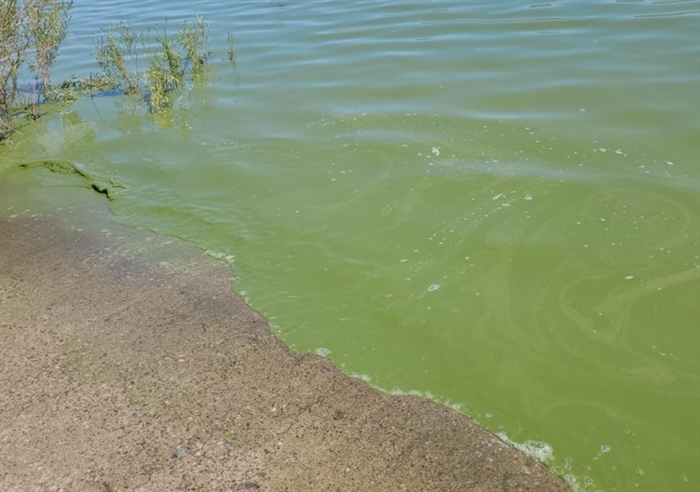No dogs allowed: Dangerous algae at popular lake near Kamloops

An emergency veterinary hospital in Kamloops alerted dog owners to the dangers of a potential blue and green algae bloom in nearby Nicola Lake after several sick dogs were admitted into their care over the weekend.
Phases Veterinary Emergency Hospital posted an urgent update on social media on July 1.
“Over the weekend we have seen several suspected cases of blue-green algae from the Nicola Lake region,” the post reads. “This type of algae is highly toxic, potentially leading to death in a matter of hours.”
The clinic has not yet confirmed whether or not the sick animal cases are directly linked to the algae bloom, but they are recommending dog owners avoid the area.
An advisory by BC Parks states users at Nicola Lake should avoid direct contact with the bloom and avoid swimming near them, and to rinse off with clean water if contact occurs.
Nicola Lake is home to the Upper Nicola Indian Band who also recently issued an alert recommending its members and their pets not swim where the blooms are visible and to provide an alternate water source for livestock drinking where algae scum is floating. The band is monitoring and collecting data on what is causing the cyanobacteria blooms in the watershed that can occur with changes in climate.
Just outside Merritt, Nicola Lake is roughly an hour’s drive away from Kamloops and West Kelowna. Set on its shore is Monck Park that offers recreational activities including camping, picnicking, swimming and fishing.
Blue-green algae booms are microscopic bacteria called cyanobacteria that appear in warm spring and summer months, and are a natural part of aquatic ecosystems throughout the BC Interior, according to the Interior Health authority.
The bacteria can produce toxins that are poisonous to people, pets and livestock. Boiling water will not remove the toxins and contaminate water should not be used for drinking, cooking or cleaning. Human exposure to blue-green algae can cause symptoms that include headaches, nausea, fever, dizziness, stomach cramp and diarrhea.
In dogs, exposure to toxic blue-green algae can cause liver failure within a few hours or neurological abnormalities within an hour, both of which can cause death. A dog’s skin can also be affected and requires treatment, according to PetMD. Not all blue-green algae are toxic to pets, but the ones that are can cause symptoms that include vomiting, diarrhea, drooling, skin blisters, muscle tremors and seizures.
Veterinarians can limit further exposure to the toxin and control life-threatening symptoms, however, because symptoms of some types of blue-green algae poisoning develop quickly, exposure is usually fatal.
There were 13 reports of algae blooms on Nicola Lake made on the provincial government’s Algae Watch Observation Map between June 29 and July 1.
While insufficient alone to determine whether algae bloom is a risk to human or animal health, the interactive map provides access to algae bloom observations submitted by citizen scientists throughout BC.
BC Parks and Interior Health will continue to monitor the situation and update information as required on the BC Parks website.
Join the Conversation!
Want to share your thoughts, add context, or connect with others in your community?
You must be logged in to post a comment.


















